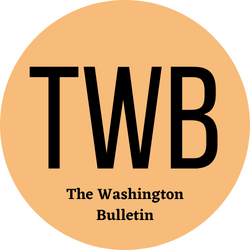How to Eat a Healthy Diet
by siteadmin

A healthy diet is one that provides a person with essential nutrition. This includes food energy and fluid, as well as macronutrients such as protein and fiber. It also involves the consumption of micronutrients, such as vitamins.
Increase Intake of Fresh Fruits and Vegetables
If you want to eat a healthy diet, you should increase your intake of fresh fruits and vegetables. These foods provide many important nutrients for your health. But many people do not get enough.
Research shows that a diet rich in fruits and vegetables can reduce your risk of certain forms of cancer, heart disease, and other chronic diseases. They can also lower blood pressure, blood sugar, and digestive problems.
Vegetables are also known to reduce the risk of age-related diseases such as diabetes, stroke, and dementia. In addition, studies have shown that eating a variety of vegetables can help ensure you are getting a wide range of beneficial plant chemicals.
The World Health Organization (WHO) recommends a minimum of five servings of fruits and vegetables a day. The Dietary Guidelines for Americans (DGA) recommend eating half of your meals as vegetables. Many countries also follow '5 A Day' guidelines.
However, it is not clear whether the ideal level of fruit and vegetable consumption lies in the middle. Some studies have shown that older adults may need to increase their intake to reach this goal.
One of the most successful strategies for increasing fruit and vegetable consumption is nutrition education. The most comprehensive systematic review of prospective cohort studies in the world showed that the majority of nutrition education interventions increased people's fruit and vegetable intake.
Nutrition education is one of the key elements in the Initiative's efforts to address socio-demographic inequities and increase the availability of safe and sustainable fruits and vegetables. This work is centered in focus countries, and includes partnerships with multilateral organizations and academia.
Limit Trans Fats
If you are looking to reduce your risk of heart disease, then it is a good idea to limit your consumption of trans fats. Trans fats are a type of fat that is often found in snack foods, baked goods, and fast food. They raise your bad cholesterol levels and decrease your good cholesterol. The American Heart Association recommends limiting your intake of trans fats to 1% of your daily calories.
One of the best ways to determine whether a product contains trans fats is to read the ingredient list. You want to look for ingredients that contain partially hydrogenated oils. These oils may be used in frying.
Another way to avoid trans fat is to choose low-fat dairy products. You want to select products with at least 2% milk fat.
For the best results, you should look for a balanced diet that includes fruits and vegetables, lean meat, and whole grains. You should also limit your intake of fried, processed, or sugary foods. Keeping a healthy weight can lower your risk of diabetes and heart disease.
In addition, many packaged foods have been made trans-fat-free. However, it is still a good idea to read the nutrition facts label before purchasing your food. This can help you keep track of your intake of trans fats.
Until the FDA can make the decision on removing industrially produced trans fats from the global food supply, you should look for a diet that includes less than one-percent trans fats.
Limit Sugar-Free Fizzy Drinks
When you want to get a healthier body, one of the first things you should do is cut back on your intake of sugar-free fizzy drinks. These drinks have been associated with dental erosion and are prone to health problems.
One can of regular cola contains 35 grams of sugar. This amount exceeds the daily sugar allowance on some popular low-carbohydrate diets.
Other sources of free sugars are sauces and cereals. Check the label to make sure you're not getting a load of added sugars.
You can also find natural sugars in fruit juices and syrups. If you like to add jam or honey to your breakfast, try a lower-fat version or a reduced-sugar version.
Categories: Health & Fitness
A healthy diet is one that provides a person with essential nutrition. This includes food energy and fluid, as well as macronutrients such as protein and fiber. It also involves the consumption of micronutrients, such as vitamins. Increase Intake of Fresh Fruits and Vegetables If you want to eat a healthy diet, you should increase…
Recent Posts
- Dr. Anne Berkeley PLLC – Leading the Way in Naturopathic and Functional Medicine in Washington, DC
- Premier Pest Control Services in Chesterfield, MO
- Kansas City Pest Control Enhances Pest Management Services in Overland Park
- Kansas City Pest Control Enhances Pest Management Services in Overland Park
- Northwest Refuse Service Expands Premier Dumpster Rental Services Across Maryland
